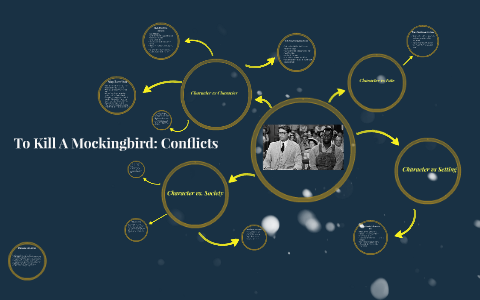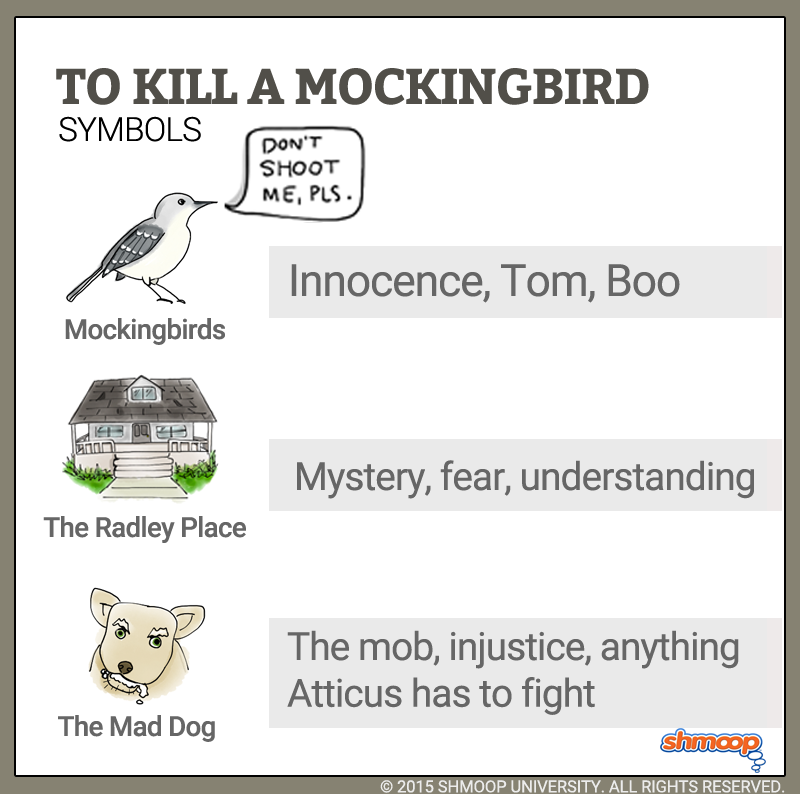Three out of four types of conflicts are external: (1) character vs. character in which the protagonist battles against the antagonist; (2) character vs. society in which the protagonist
18 Critical To Kill a Mockingbird Quotes, Explained
To Kill a Mockingbird explores themes of heroism and the idea of role models as well. Lee has stated that the novel was essentially a long love letter to her father, whom she idolized as a man with deeply held moral convictions. Atticus is clearly the hero of the novel, and functions as a role model for his children.

Source Image: lukeharkness.com
Download Image
One conflict that arises in chapter 5 is between the children and Atticus regarding their treatment of Boo Radley. After Scout has her enlightening conversation regarding the true identity of Boo

Source Image: prezi.com
Download Image
To Kill a Mockingbird Summary – Plot Diagram Example To Kill a Mockingbird takes place in the fictional town of Maycomb, Alabama, during the Great Depression. The protagonist is Jean Louise (“Scout”) Finch, an intelligent though unconventional girl who ages from six to nine years old during the course of the novel. She is raised with her brother, Jeremy Atticus (“Jem”), by their widowed

Source Image: tkamper1.weebly.com
Download Image
What Is The Conflict In To Kill A Mockingbird
To Kill a Mockingbird takes place in the fictional town of Maycomb, Alabama, during the Great Depression. The protagonist is Jean Louise (“Scout”) Finch, an intelligent though unconventional girl who ages from six to nine years old during the course of the novel. She is raised with her brother, Jeremy Atticus (“Jem”), by their widowed To Kill a Mockingbird isn’t a mystery novel, but this month it’s been puzzling a few Library of Congress staff members.. Harper Lee’s tale of conflict in a small Alabama town is a perennial favorite with teachers. The Library’s lesson plan “To Kill a Mockingbird: A Historical Perspective”, which uses photos and oral histories from the Library’s collections, has always been fairly
To Kill a Mockingbird – TKAM Blog
In To Kill a Mockingbird, conflict is not only present, but it is a very apparent element. Much of the conflict arises from the prejudices of the people of Maycomb. Examples of To Kill a Mockingbird Conflict MAN vs. SELF: The Sheriff vs. Himself When Boo kills Ewell, the sheriff must decide whether to lie, or to arrest Boo. The Mad Dog in To Kill a Mockingbird | Shmoop

Source Image: shmoop.com
Download Image
Brief Analysis of the Ethics of “To Kill a Mockingbird” – The Singing in the Wood In To Kill a Mockingbird, conflict is not only present, but it is a very apparent element. Much of the conflict arises from the prejudices of the people of Maycomb. Examples of To Kill a Mockingbird Conflict MAN vs. SELF: The Sheriff vs. Himself When Boo kills Ewell, the sheriff must decide whether to lie, or to arrest Boo.
Source Image: singinginthewood.blogspot.com
Download Image
18 Critical To Kill a Mockingbird Quotes, Explained Three out of four types of conflicts are external: (1) character vs. character in which the protagonist battles against the antagonist; (2) character vs. society in which the protagonist

Source Image: blog.prepscholar.com
Download Image
To Kill a Mockingbird Summary – Plot Diagram Example One conflict that arises in chapter 5 is between the children and Atticus regarding their treatment of Boo Radley. After Scout has her enlightening conversation regarding the true identity of Boo

Source Image: storyboardthat.com
Download Image
To Kill a Mockingbird movie review (2001) | Roger Ebert To Kill a Mockingbird by Harper Lee, published in 1960, is a profound exploration of racial injustice and moral growth set in the fictional town of Maycomb, Alabama, during the 1930s.Narrated by a young girl named Scout Finch, the story unfolds as her father, Atticus Finch, a principled lawyer, defends Tom Robinson, a Black man falsely accused of raping a white woman.

Source Image: rogerebert.com
Download Image
To Kill a Mockingbird SparkNotes Literature Guide by SparkNotes, Paperback | Barnes & Noble® To Kill a Mockingbird takes place in the fictional town of Maycomb, Alabama, during the Great Depression. The protagonist is Jean Louise (“Scout”) Finch, an intelligent though unconventional girl who ages from six to nine years old during the course of the novel. She is raised with her brother, Jeremy Atticus (“Jem”), by their widowed
Source Image: barnesandnoble.com
Download Image
To Kill a Mockingbird – Characters, Themes, and Motifs – Reviews Rants and Rambles To Kill a Mockingbird isn’t a mystery novel, but this month it’s been puzzling a few Library of Congress staff members.. Harper Lee’s tale of conflict in a small Alabama town is a perennial favorite with teachers. The Library’s lesson plan “To Kill a Mockingbird: A Historical Perspective”, which uses photos and oral histories from the Library’s collections, has always been fairly

Source Image: vinhanley.com
Download Image
Brief Analysis of the Ethics of “To Kill a Mockingbird” – The Singing in the Wood
To Kill a Mockingbird – Characters, Themes, and Motifs – Reviews Rants and Rambles To Kill a Mockingbird explores themes of heroism and the idea of role models as well. Lee has stated that the novel was essentially a long love letter to her father, whom she idolized as a man with deeply held moral convictions. Atticus is clearly the hero of the novel, and functions as a role model for his children.
To Kill a Mockingbird Summary – Plot Diagram Example To Kill a Mockingbird SparkNotes Literature Guide by SparkNotes, Paperback | Barnes & Noble® To Kill a Mockingbird by Harper Lee, published in 1960, is a profound exploration of racial injustice and moral growth set in the fictional town of Maycomb, Alabama, during the 1930s.Narrated by a young girl named Scout Finch, the story unfolds as her father, Atticus Finch, a principled lawyer, defends Tom Robinson, a Black man falsely accused of raping a white woman.